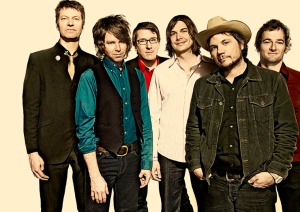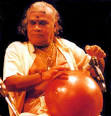The great guitar codas
Alternative band Wilco
IF there’s one song I’ve been tripping on over the past few days, it’s ‘Impossible Germany’ by American alternative rock band Wilco. What I love most about this number, which is part of the 2007 album ‘Sky Blue Sky’, is the lengthy three minute, 20-second twin guitar burst that concludes it. Featuring axeman Nels Cline, this is clearly one of the best guitar codas I’ve heard in a long time.
Over the years, one has heard many great guitar intros, guitar solos and even entire songs played on the guitar. But there’s something about a guitar ‘coda’ or ‘outro’ – the portion concluding the song – that makes it special. Whether they simply fade out or end abruptly, they leave you on a high. Who would imagine the Eagles’ ‘Hotel California’ or Pink Floyd’s ‘Comfortably Numb’ without their glorious climaxes?
Sadly, not many bands use an extended coda in today’s times. At least most of the memorable codas were played in the 1960s and 1970s, and a few groups like Guns N’ Roses used them later. But there have been some classics, and ‘Impossible Germany’ tempts me to list my all-time favourite 10.
I am excluding ‘Hotel California’ and ‘Comfortably Numb’ as, despite being path-breaking songs which I have grown up on, both suffer from being overheard. And besides these 10, there will also be others, which readers can write in about. Here goes:
1) Dear Mr Fantasy – Traffic: This was the song that really got me into the coda craze. Though guitarist Dave Mason was part of the group in this 1967 number, the solo here was played by Steve Winwood, who also sang lead vocals. Traffic also had a great coda on ‘Heaven Is In Your Mind’.
2) Time Waits for No One – The Rolling Stones: From the 1974 album ‘It’s Only Rock N’ Roll’, this boasts of one of the cleanest coda riffs. While Keith Richards plays guitar for most of the song, the extended solo is actually by Mick Taylor. And talking of Stones codas, we also have the brilliant ‘Can’t You Hear Me Knockin’ from the 1971 album ‘Sticky Fingers’.
3) Free Bird – Lynyrd Skynyrd: Easily one of the best guitar codas ever produced, with Allen Collins playing lead guitar and Gary Rossington on slide and rhythm guitar. It was released on the band’s 1973 debut, and has since been one of the most covered live songs in rock.
4) Sultans of Swing – Dire Straits: It took me a while to appreciate the coda of this song, simply because the entire piece is so uniformly good, and Mark Knopfler’s voice and guitar enchants you from the beginning. But slowly, the outro began sinking in – it’s simple, straight and yet so sublime.
5) White Room – Cream: The psychedelic rock gem released in 1968 by supergroup Cream, featuring guitarist Eric Clapton, bassist Jack Bruce and drummer Ginger Baker. Here, Clapton played guitar with a wah-wah pedal to get a talking effect.
6) Moonage Daydream – David Bowie: First written in 1971, it was used a year later on the album ‘The Rise and Fall of Ziggy Stardust and the Spiders from Mars’. The memorable guitar coda is played by Mick Ronson.
7) Pigs (3 Different Ones) – Pink Floyd: We’ve already mentioned ‘Comfortably Numb’, but this masterpiece from the 1977 album ‘Animals’ has an ending that takes you into another zone. While guitarist David Gilmour dazzles, Roger Waters chips in with rhythm guitar.
8) Layla – Derek & The Dominoes: One of guitar god’s Eric Clapton’s best-known compositions, written for his ex-wife Pattie Boyd. However, both the intro and guitar coda for this gem is played by the great Duane Allman, formerly of the Allman Brothers Band. The wailing guitar riff in fact merges with the famous piano climax which acts as the second part of the song.
9) Black Dog – Led Zeppelin: The opening track of the album ‘Led Zeppelin IV’, this has one of the most instantly recognisable intros in rock. However, the coda just completes the song beautifully, with guitarist Jimmy Page producing one of his most famous stretches.
10) November Rain – Guns N’ Roses: The power ballad for ‘Use Your Illusion 1’, this became one of the most popular GNR songs. Slash, equally known for his memorable riff on ‘Sweet Child O Mine’, come up with an incredible guitar coda on this one.
My coda: Well, these are 10 of my personal favourites, but there are surely many more, like Jimi Hendrix’s short coda on his version of Bob Dylan’s ‘All Along The Watchtower’ or Randy Rhoads’ great work on the Black Sabbath song ‘Mr Crowley’. Which are the other great guitar codas you’ve heard. Do drop in a line to add to the list.




